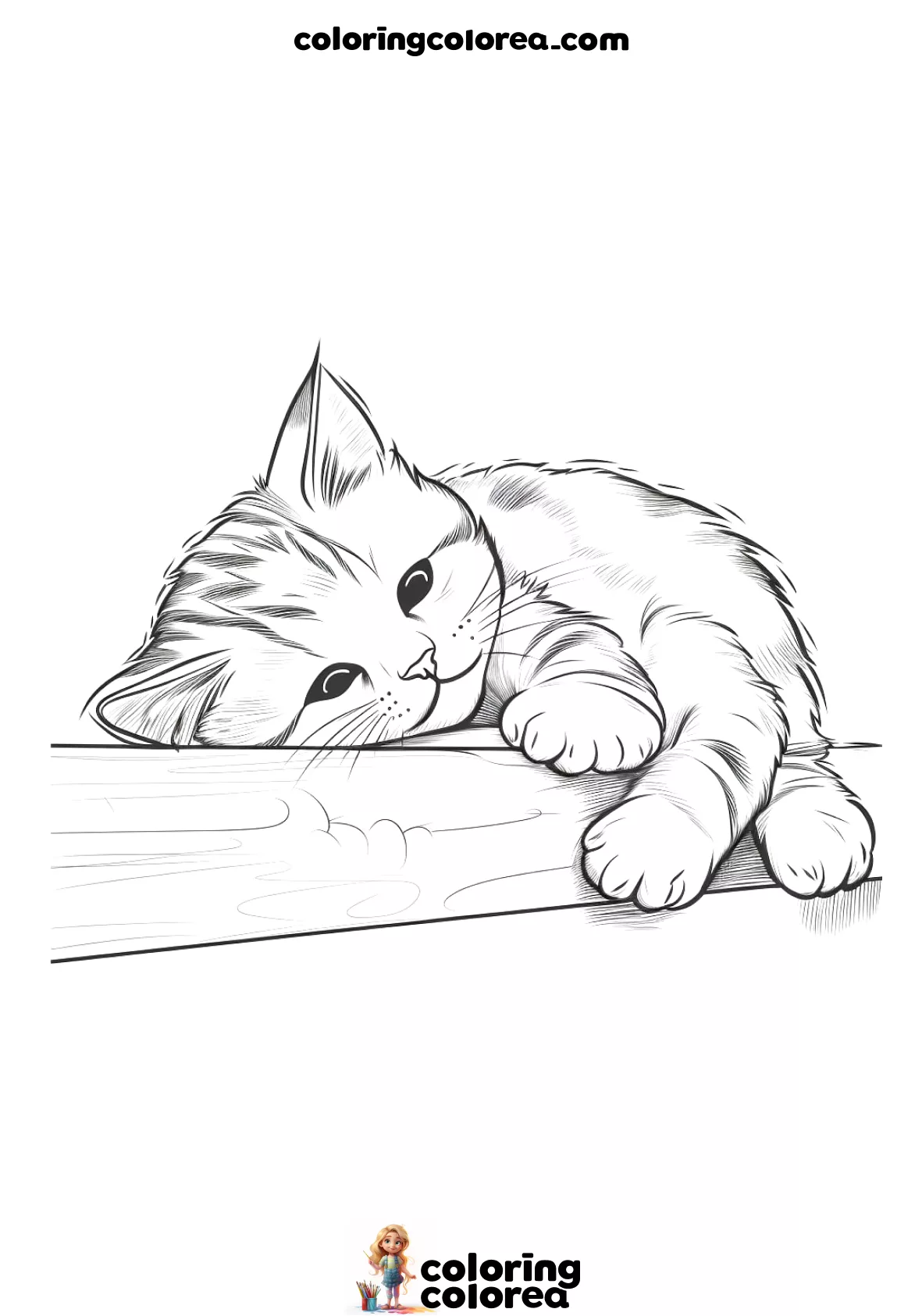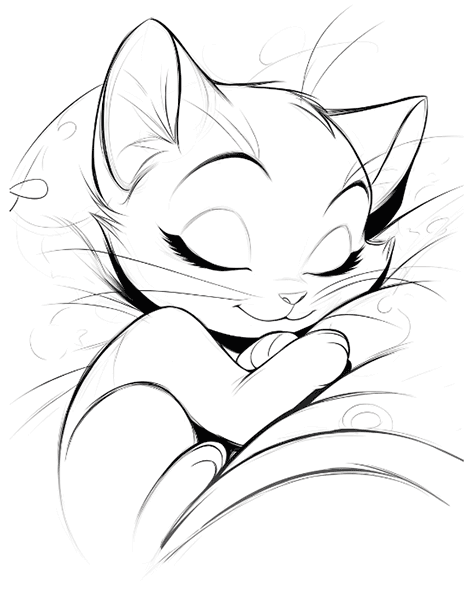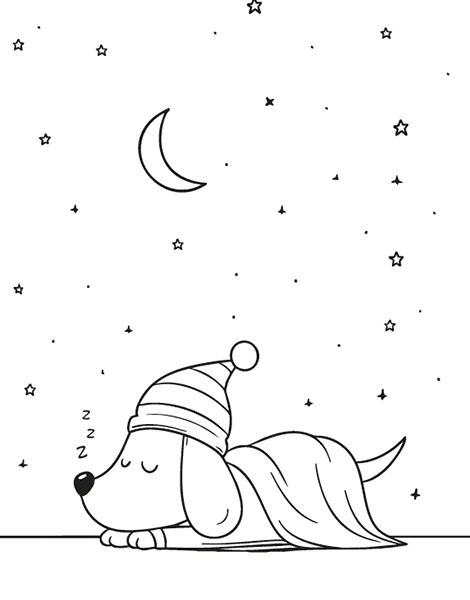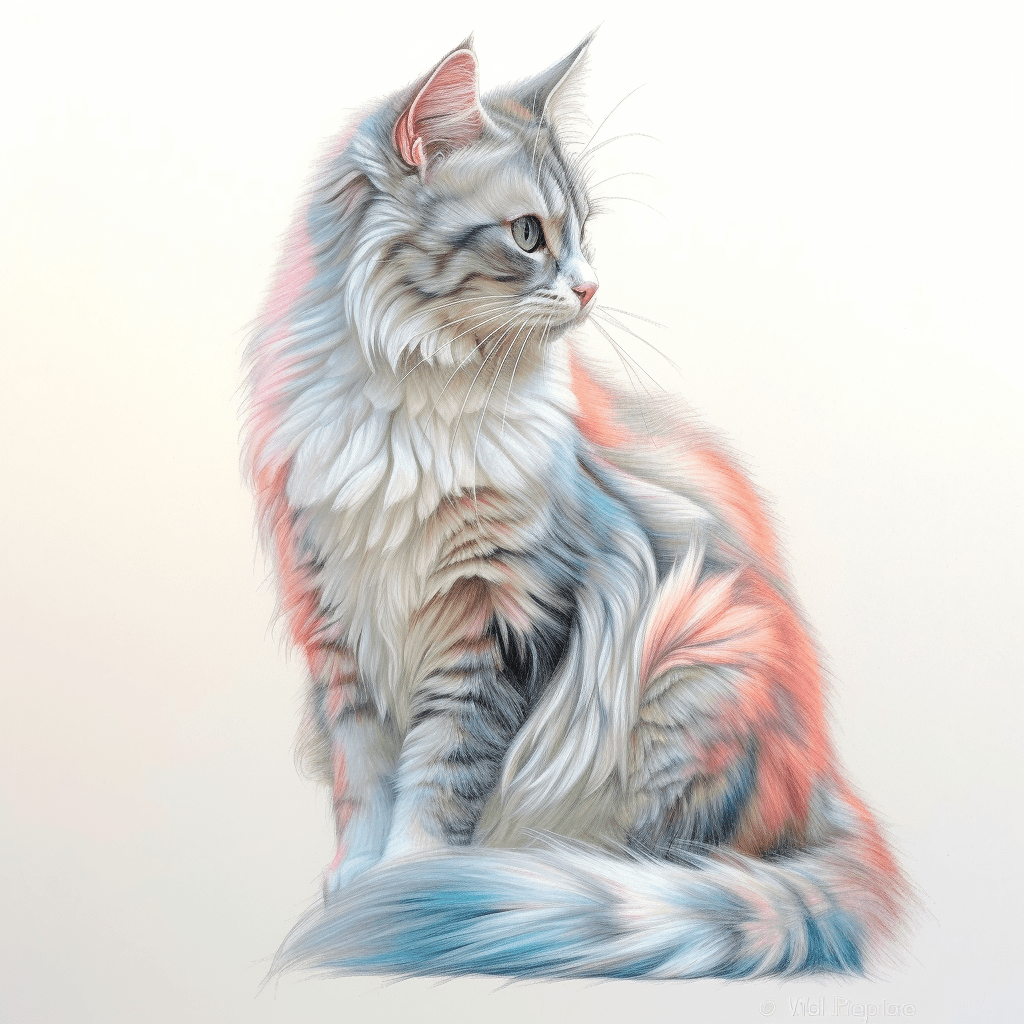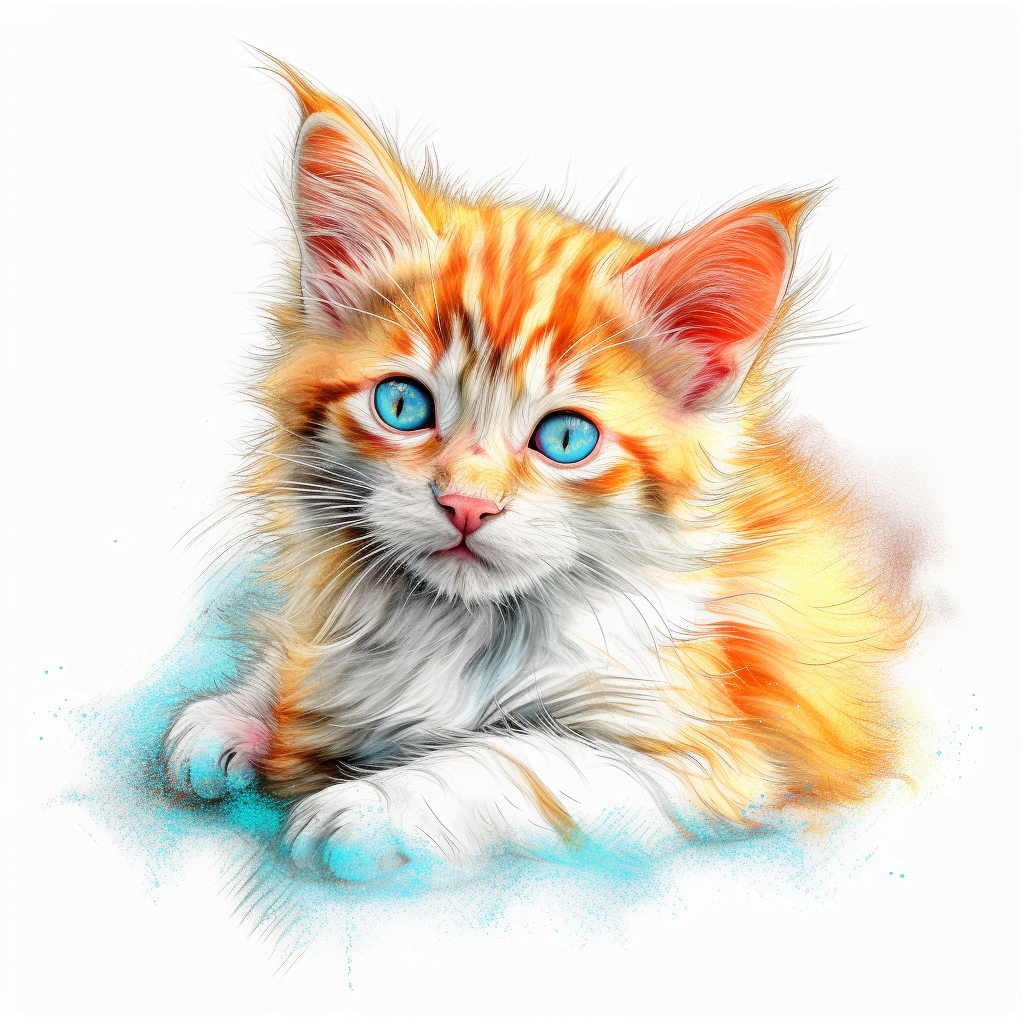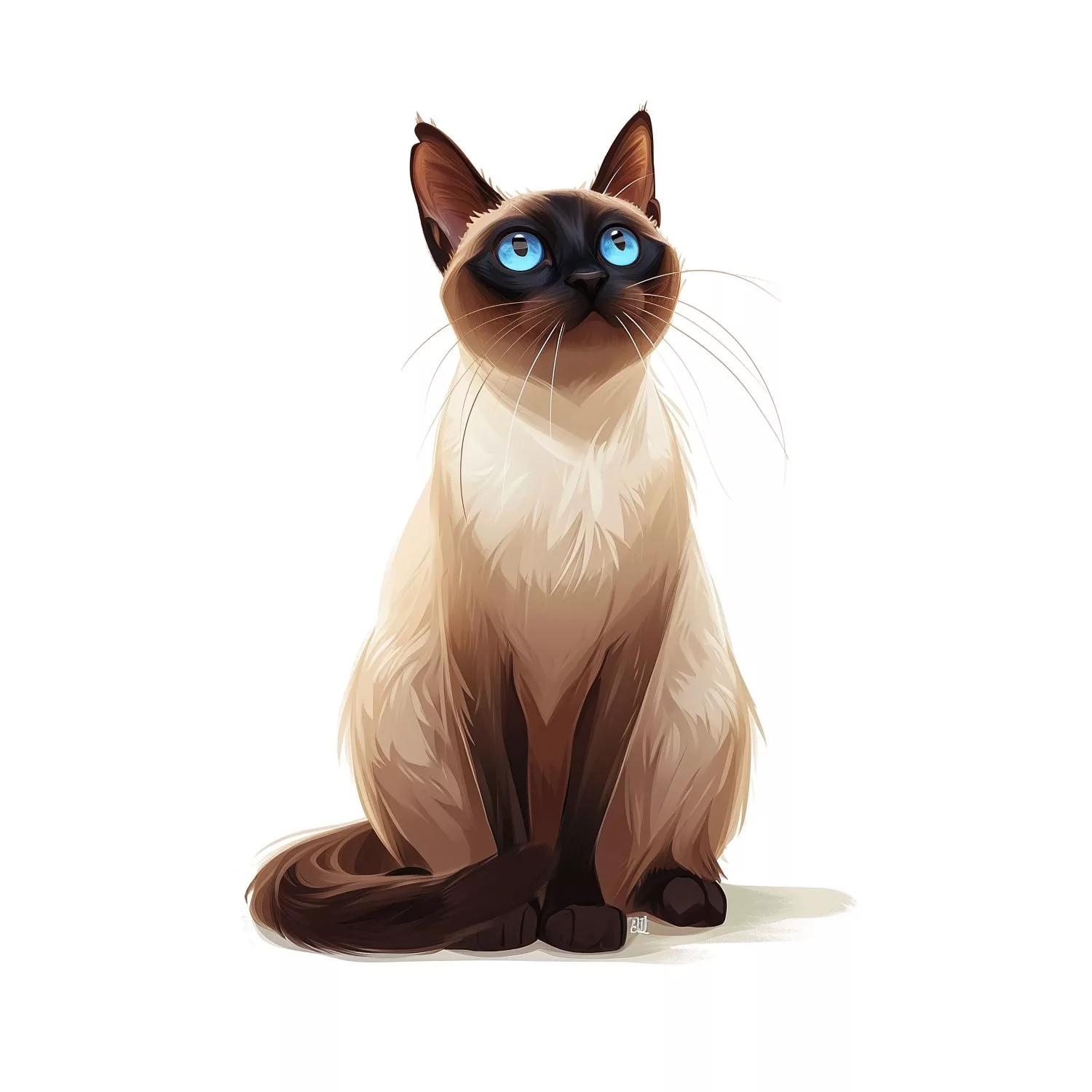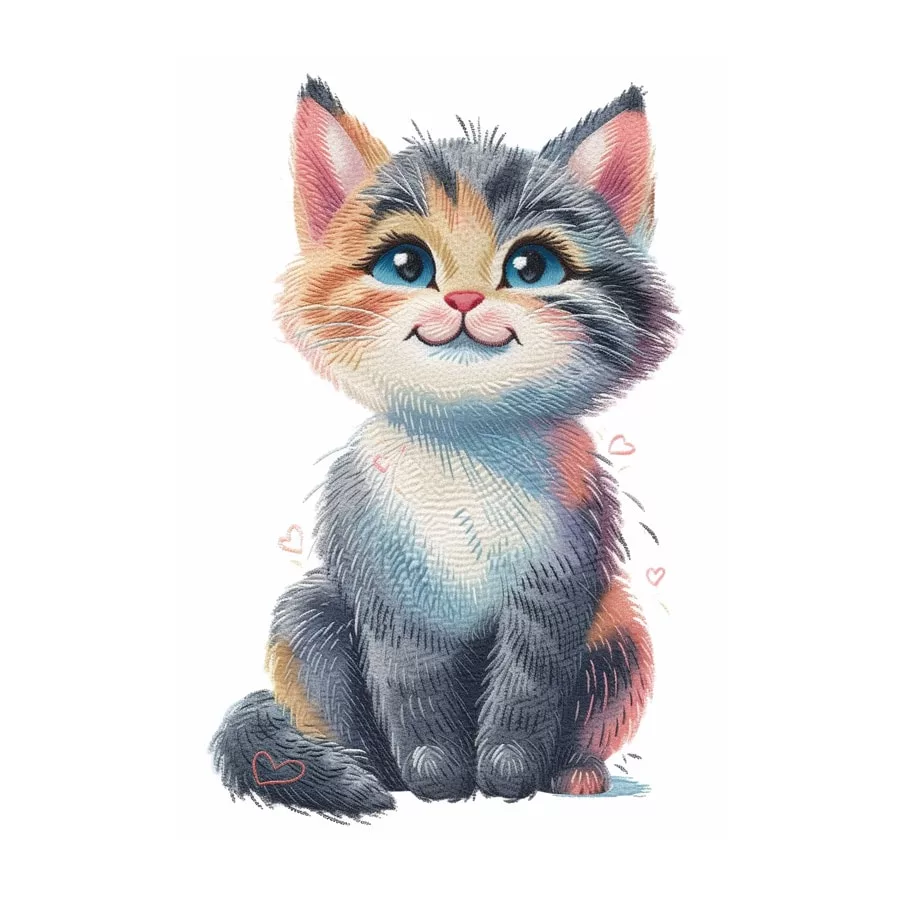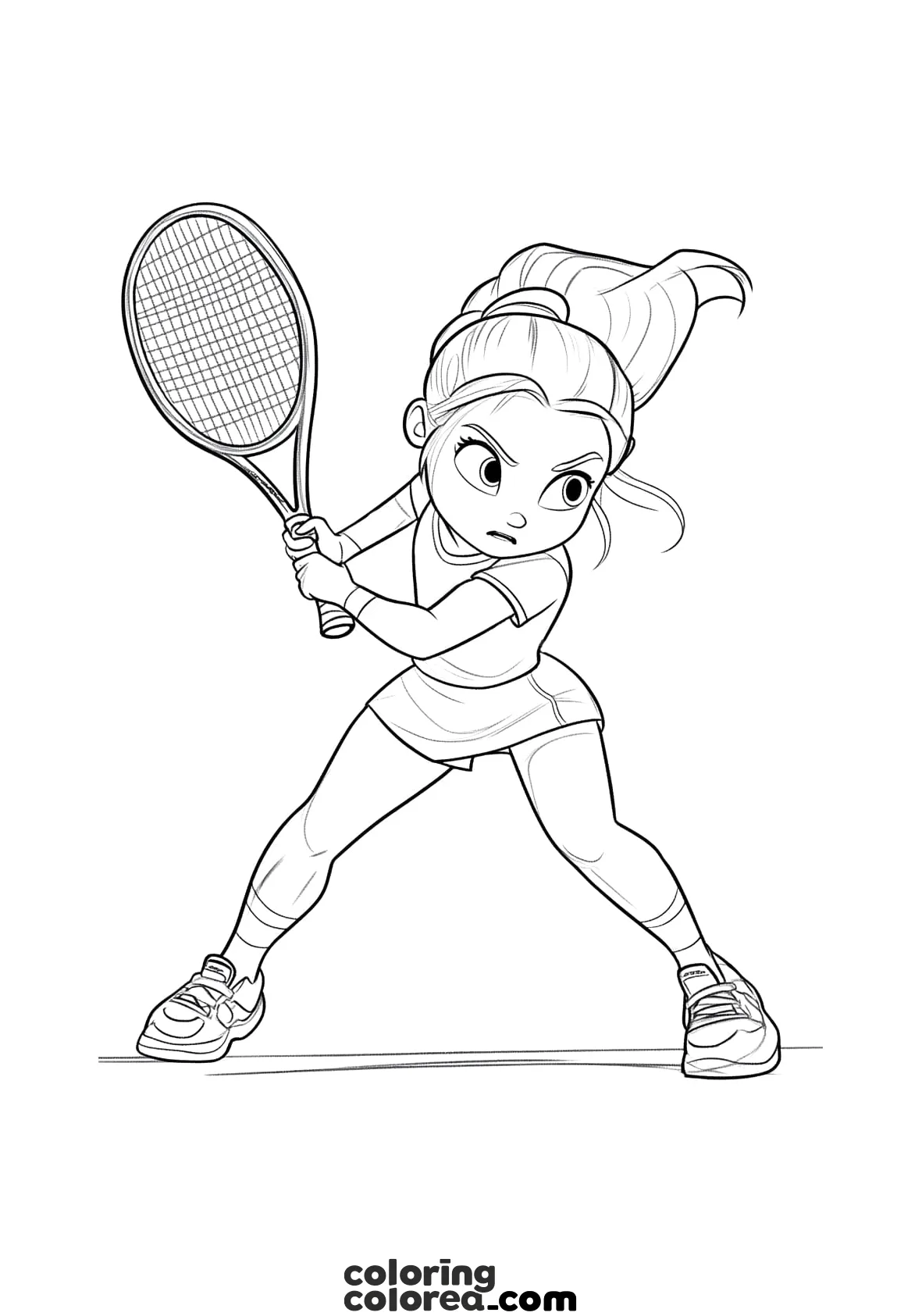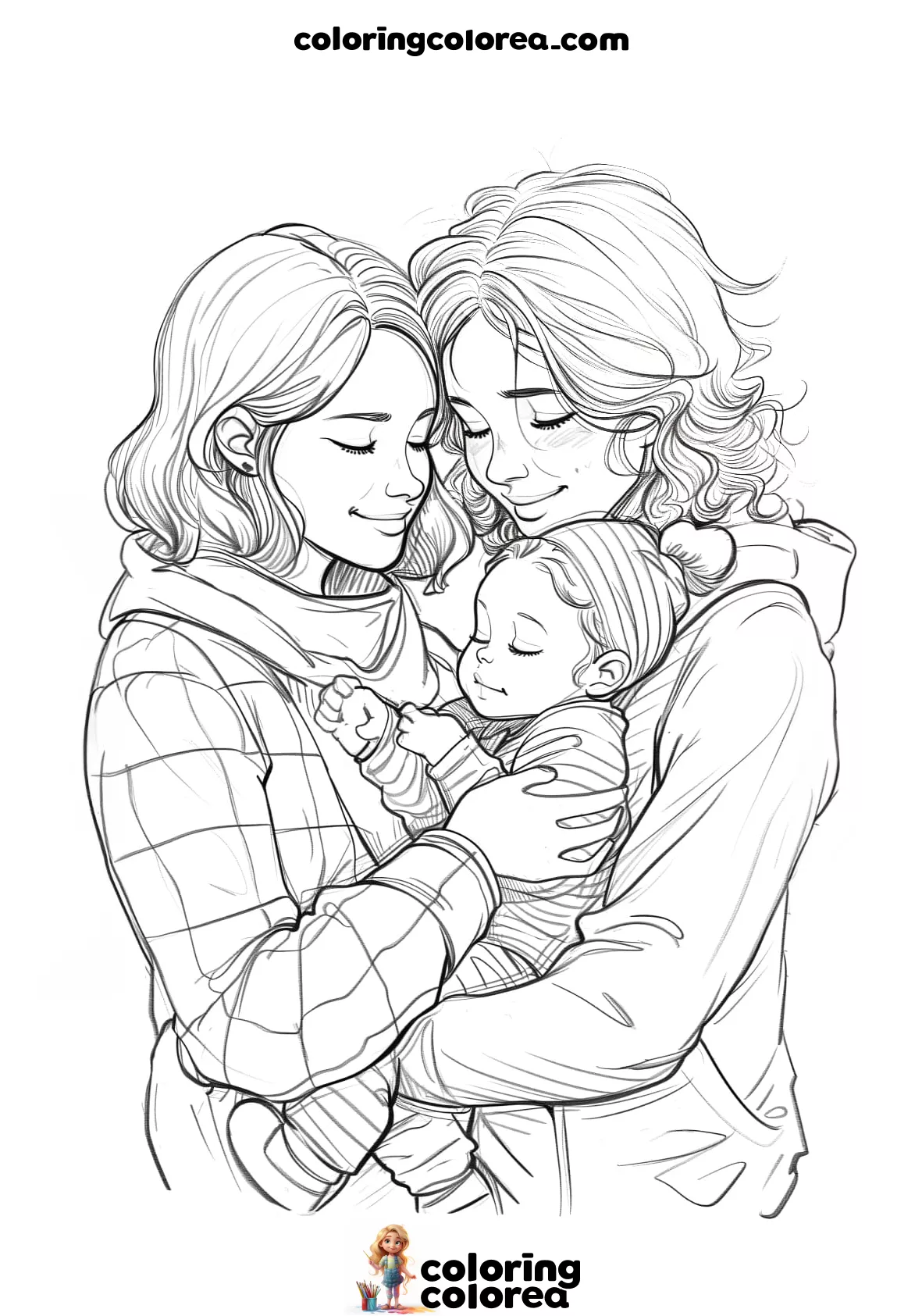Ideas and tips for colouring the kitten
The kitten’s fur is soft and fluffy, perfect for practicing shading and giving a realistic effect. You can use colored pencils to work in layers. Start with a light base, like cream or light gray, depending on the type of cat you want to create. Then, add shadows with a darker tone, like gray, brown, or even black, in areas where the fur appears thicker, such as behind the ears and on the paws.
To create a soft texture, use short, gentle strokes in the direction the kitten’s fur grows. The ears are a great place to add fine details, such as a touch of pink inside to show their delicate skin.
The kitten’s eyes, although they seem closed in relaxation, might have a soft glow. You can use a light color for the eyelids, like gray or cream, to maintain the sweetness of the expression.
The texture of the wood or surface where the kitten is resting is another great place to practice coloring techniques. If it’s a branch, use shades of brown, but if you prefer it to be furniture, you can go for neutral tones like beige or light gray. To add texture, you can draw fine lines with a sharp pencil or a fine-tipped marker, mimicking the bark of a tree or the grain of wood.
Fun Facts About Kittens
Did you know that kittens can’t see well until they’re at least 2 weeks old? During that time, they depend entirely on their mother for food and movement. Also, a kitten’s purr isn’t just a sign of contentment—they also purr to soothe themselves when they’re nervous or scared.
